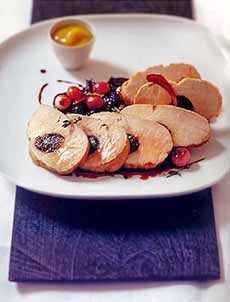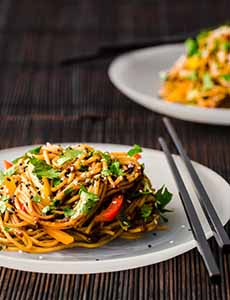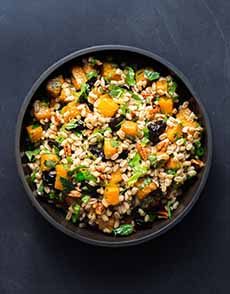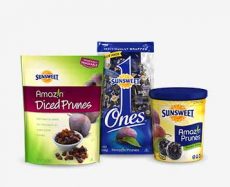Prunes, Delicious At Every Meal: Prunes Uses & History
|
National Prunes Day is June 17th. October 17th is Four Prunes Day. It may sound like a funny name for a food holiday. Some people say “meh” to prunes, but for centuries it was based on medical advice that four to nine prunes a day would help with “digestive regularity.” We love the flavor prunes and prune juice. But many Americans steer clear of them, perhaps because of their long association with regularity (and hence, National Prunes Day was founded). A campaign launched by prune producers in 2001 promoted a name change from prunes to “dried plums” (which is what prunes are), to make them more appealing. It was not successful in moving the needle, and “prune” has returned to common use. But as anyone who has ever made a pork or chicken roast with stuffed prunes knows, the dried fruits are delicious on their own. One of our favorite hors d’oeuvre is prunes stuffed with chicken liver mousse (you can marinate the prunes in Cognac overnight before stuffing them). The 21st-century view of healthy prunes should be as a high-antioxidant fruit, full of fiber, potassium, and magnesium. A clinical study currently underway indicates that prunes may have the ability to reduce bone loss in postmenopausal women and may help fight osteoporosis. While dried fruits such as prunes are easy to tote around for a healthy snack, Sunsweet Growers has made it even easier with Sunsweet Ones, which are individually wrapped. One prune contains just 23 calories. > The history of prunes is below. And one of our favorite easy desserts: Soak prunes in Cognac, Grand Marnier, prune liqueur, or orange liqueur for several hours or overnight. Then use them to top vanilla ice cream. You can even flambé them, like Cherries Jubilee. Prunes have been appreciated for thousands of years due to their nutritional, dietary, and medical properties, and were prescribed by Greek, Roman and Arab doctors. Today, we know that they are: A prune is a dried plum of any cultivar, mostly the European plum (Prunus domestica). More than 1,000 plum cultivars are grown worldwide for drying; an additional 1,000 or so are grown for plum fruit (different cultivars are created to do better in particular environments). The Greeks and Romans were very fond of both variations of the fruit. Wild plums originated in China and were cultivated from sour plums into sweet fruit. Plums came to the Middle East along the Silk Road, and plum trees flourished all over the Mediterranean basin. The plums were dried in the sun or in bakers’ ovens, transforming them into prunes. Because they are highly nutritious and have a long shelf life, prunes and other dried fruits were ideal for travelers, and to store in case of poor harvests. From the Mediterranean to Northern Europe: The Romans planted the first variety of plum in Gaul near the town of Agen, which is still famous for its delicious prunes. In the 12th century, Benedictine monks returning from the Third Crusade brought new varieties of plums from Syria and grated them onto the local rootstock to create new varieties. Known as Pruneaux d’Ente (grafted prunes), this was the prune that made its way to California, in 1850. It was brought by a man from the Agen area, who grafted it onto local wild plum trees. While these California prunes were growing, so was the U.S. consumer demand for European prunes. By the 1870s, there were enough imports to catch the eye of farmers, who began planting plum trees from the California stock. Today, California is America’s source of prunes. They’re available year-round. Try some sooner, rather than later. |
| |
|
CHECK OUT WHAT’S HAPPENING ON OUR HOME PAGE, THENIBBLE.COM.
|
||








